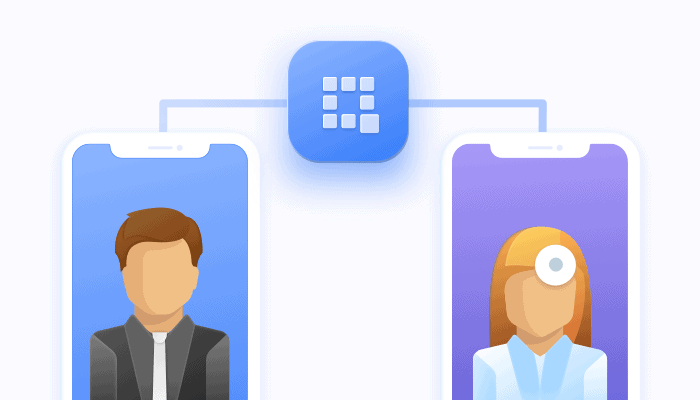
Patient-doctor communication is an essential element of providing healthcare, diagnosis, and medication services. Traditionally hospitals and healthcare service providers relied on face-to-face communication to deliver their services, but the Covid-19 outbreak changed that, perhaps for a long time yet to come.
Remote communication via telehealth platforms is playing a major part in fighting the pandemic. Through limiting face-to-face communication, we help to prevent the spread of disease. Remote education, consulting services, and remote business communication industries all received a major boost during the outbreak.
However, healthcare is different. We can’t fully replace the whole healthcare service model with telecommunication or remote communication channels, but we can replace some parts of it. During this global pandemic, the use of remote communication solutions takes the pressure off healthcare professionals and prevents the overcrowding of healthcare facilities. Thus enabling doctors to allocate more resources to the actual fighting of Covid-19 related illnesses, rather than simple (and oftentimes administrative) tasks which can be solved remotely.
In this article, we will explain which parts of the traditional doctor-patient communication we can replace with remote telemedicine platforms, messaging services, and channels, as well as the benefits of using QuickBlox infrastructure for healthcare service providers, with a primary focus on improving doctor-patient remote communication service.
Scenarios of Doctor-Patient Communications
A physical examination is not always required in many cases. Therefore, patients can consult their doctors remotely to ask for advice about medication, a diet plan, or to follow-up during the recovery process.
Here are some cases where digital remote communication can replace traditional doctor-patient communication.
- Patient Appointment and First Compliance Record
Contacting a healthcare provider like a doctor for an initial consultation and/or to request an appointment can be facilitated via a telemedicine software platform. Through a remote solution, a doctor can listen to the patient’s complaint, ask questions to identify the problem, then decide if the patient needs to be referred to another specialist or requires certain tests or physical examination.
- Follow-up Consultations
Digital communication systems, like QuickBlox, provide an efficient and systematic way of organizing follow-up healthcare needs. Sometimes remote follow-up is effective to determine improvement and changes in the condition of the patient. It’s also necessary for doctors to keep track of medication and to provide patients with useful advice and healthcare tips, all of which can be done with telemedicine platforms rather than physical attendance at the hospital or clinic.
- Lab Test Updates
HIPAA compliant telemedicine software can securely deliver test results to patients in a timely manner and then provide a means for patients to set up another doctor appointment to understand the findings. Remote appointments save time and provide an effective way to communicate especially with less worrying results.
Making these types of communications remote will help reduce the load on hospitals and clinics so that they can allocate their resources to Covid-19 patients rather than to ordinary follow-ups.
- Personalized recommendations
Personalized recommendations and life-style tips are not easy for patients or their doctors to keep up with the appointment model. As an example, lifestyle-altering diseases like diabetes require constant follow-up and personalized advice for diet, exercise, and medication.
Keeping these meetings recurring between doctors and patients is easy with a medical platform.
- Patient Self-Services
With patient self-service the patient can be integrated within the workflow as an effective party by themselves. As an example, they can retrieve lab tests from a private online portal, register for appointments, and interact with a chatbot to enter complaints, information, and notes.
QuickBlox offers a flexible model which ensures all these features are possible.
Why is QuickBlox the Preferable Answer?
QuickBlox is an infrastructure for communication that enterprises can build their applications on. Enterprises can extend their current application model with QuickBlox communication and messaging functionalities with ease.
In a nutshell, QuickBlox offers secure compliant privacy-aware messaging, High-definition (HD) video calls, instant push notification for iOS and Android besides out-of-the-box compliance with specific healthcare regulations (HIPAA and GDPR).
Furthermore, QuickBlox has an impeccable support team which ensures a fast and productive outcome for enterprise developers to build, integrate, or implement QuickBlox into their workflow.
With QuickBlox, healthcare organizations can outsource the overhead of communication infrastructure and just focus on serving their patients and customers instead.
QuickBlox Primary Features
- High-quality chat, video, and audio messaging and calls.
- Privacy-aware infrastructure: Private communication and messaging (With History-on/History-off).
- Secure centralized security for all messages, backed by strong encryption.
- Compliance with GDPR and HIPAA.
- Mobile-ready with support of mobile-focused SDKs (Native iOS, Native Android, React-native, and Flutter)
- Push notifications for iOS and Android (Browser push notification with third-party support)
- Cost and resource-effective, good compared to other competitors.
- Easy to create apps and integrate into the already-running enterprise apps.
- Support: 24/7 support for developers and DevOps engineers.
- Customizable implementation/integration workflows.
Using QuickBlox as an infrastructure for a healthcare setup (e.g. hospitals) ensures:
- Improved communication process between patients and their doctors and among medical staff.
- Enhanced clinical workflow: Real-time response, activity logging, and controlled centralized messages stream. Information can be gathered from patients and processed by healthcare providers instantly.
- Increased patient satisfaction rate.
- Improved quality of service: instant and high-quality calls.
- Full mobile support that provides coverage to on-call doctors and staff at different stations.
QuickBlox solutions for Healthcare
- Q-Consultation
Q-Consultation is a white-label virtual room application based on QuickBlox services. It’s the best implementation for a waiting room-alike system to manage a consultation routine for doctors and their patients.
The application follows a unique model which fits exactly into private clinical practices as well as hospital workflows.
- Q-Municate
Q-Municate is another Android/ iOS and Web application for instant messaging and video calling. It has the full specification of QuickBlox functionalities like HD video calls, real-time messaging, file-sharing, and push notification.
It’s freely available at Apple’s App Store and Google Android PlayStore.
Doctors can use this application free to communicate with their work colleagues and patients.
- Implementation with QuickBlox into existing EMR/EHR or HIS/HMS
Most hospitals and medical facilities have their setup of clinical practice management software. They are already built and hence require integration of extra services rather than a full replacement.
QuickBlox can be integrated into any web-based system as well as work in parallel to the current setup by providing an integrated messaging and video calling layer with full push notifications support.
- Custom-built apps based on QuickBlox</li>
Because QuickBlox has a rich set of software development kits that support many platforms, hospitals and healthcare enterprises can build their own custom-flow-oriented messaging and communication application without the need to worry about infrastructure and security.
QuickBlox offers a server REST-API as well as powerful SDK for Java, Kotlin, iOS (Native Development), React-Native, Flutter, and JavaScript SDK.
All the offered kits support mobile, web, and desktop development.
Conclusion
QuickBlox improves communication services for healthcare facilities among work colleagues and between patients and their doctors. It provides the functionalities required to run smoothly messaging and HD video calls for the staff without affecting the current working model or increasing the overload for the IT department.
Enhanced communication and messaging model ensures smooth workflow which leads to improved quality and better patient satisfaction.






